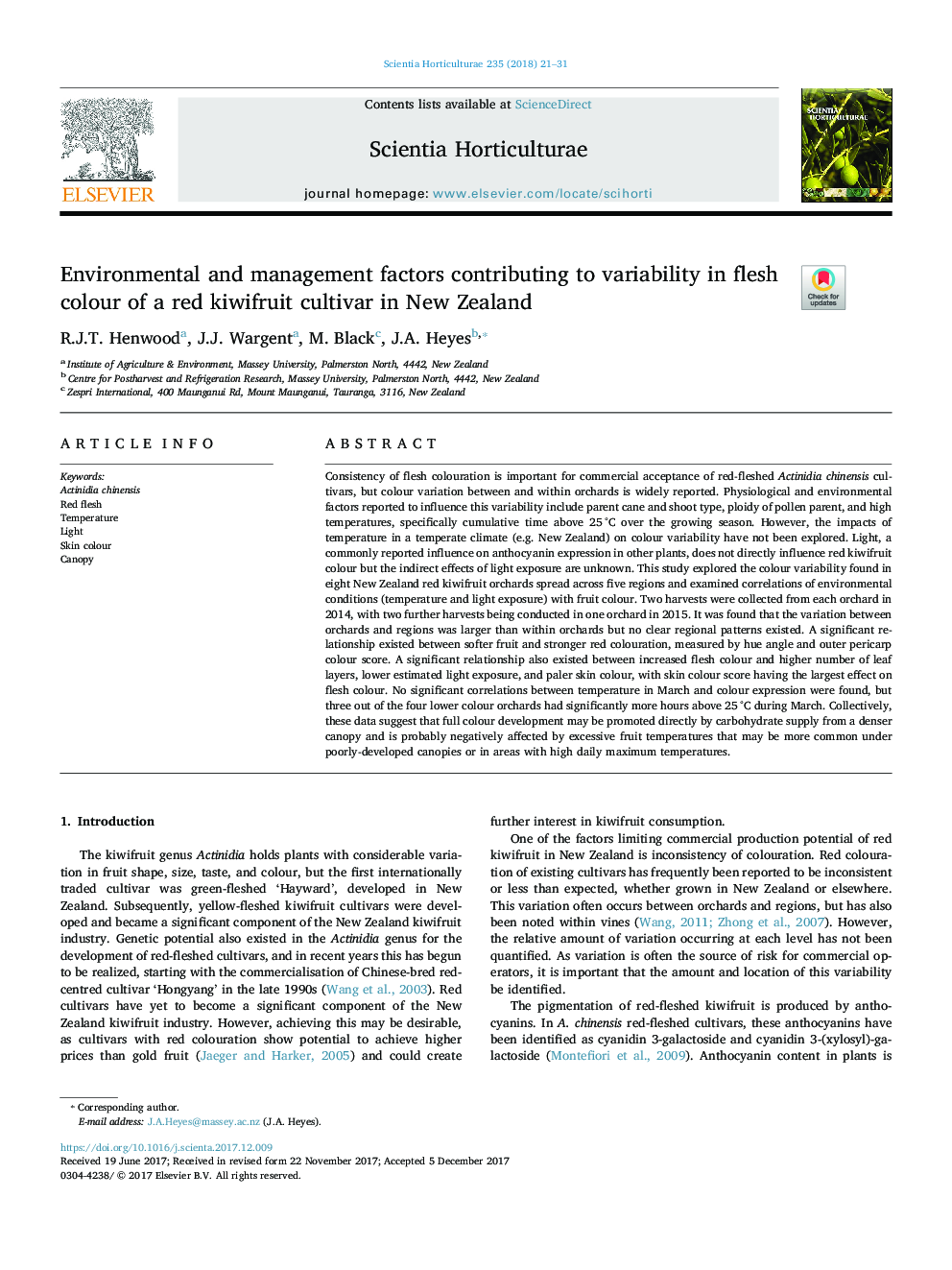| کد مقاله | کد نشریه | سال انتشار | مقاله انگلیسی | نسخه تمام متن |
|---|---|---|---|---|
| 8892657 | 1628763 | 2018 | 11 صفحه PDF | دانلود رایگان |
عنوان انگلیسی مقاله ISI
Environmental and management factors contributing to variability in flesh colour of a red kiwifruit cultivar in New Zealand
ترجمه فارسی عنوان
عوامل محیطی و مدیریتی که سبب تغییر در رنگ گوشت ارقام قرمز کویو در نیوزیلند می
دانلود مقاله + سفارش ترجمه
دانلود مقاله ISI انگلیسی
رایگان برای ایرانیان
موضوعات مرتبط
علوم زیستی و بیوفناوری
علوم کشاورزی و بیولوژیک
دانش باغداری
چکیده انگلیسی
Consistency of flesh colouration is important for commercial acceptance of red-fleshed Actinidia chinensis cultivars, but colour variation between and within orchards is widely reported. Physiological and environmental factors reported to influence this variability include parent cane and shoot type, ploidy of pollen parent, and high temperatures, specifically cumulative time above 25â¯Â°C over the growing season. However, the impacts of temperature in a temperate climate (e.g. New Zealand) on colour variability have not been explored. Light, a commonly reported influence on anthocyanin expression in other plants, does not directly influence red kiwifruit colour but the indirect effects of light exposure are unknown. This study explored the colour variability found in eight New Zealand red kiwifruit orchards spread across five regions and examined correlations of environmental conditions (temperature and light exposure) with fruit colour. Two harvests were collected from each orchard in 2014, with two further harvests being conducted in one orchard in 2015. It was found that the variation between orchards and regions was larger than within orchards but no clear regional patterns existed. A significant relationship existed between softer fruit and stronger red colouration, measured by hue angle and outer pericarp colour score. A significant relationship also existed between increased flesh colour and higher number of leaf layers, lower estimated light exposure, and paler skin colour, with skin colour score having the largest effect on flesh colour. No significant correlations between temperature in March and colour expression were found, but three out of the four lower colour orchards had significantly more hours above 25â¯Â°C during March. Collectively, these data suggest that full colour development may be promoted directly by carbohydrate supply from a denser canopy and is probably negatively affected by excessive fruit temperatures that may be more common under poorly-developed canopies or in areas with high daily maximum temperatures.
ناشر
Database: Elsevier - ScienceDirect (ساینس دایرکت)
Journal: Scientia Horticulturae - Volume 235, 17 May 2018, Pages 21-31
Journal: Scientia Horticulturae - Volume 235, 17 May 2018, Pages 21-31
نویسندگان
R.J.T. Henwood, J.J. Wargent, M. Black, J.A. Heyes,
